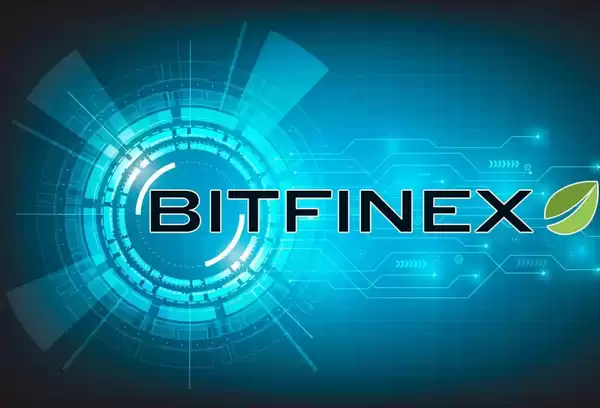-
 Bitcoin
Bitcoin $118600
0.36% -
 Ethereum
Ethereum $3855
1.06% -
 XRP
XRP $3.195
-0.09% -
 Tether USDt
Tether USDt $1.000
-0.04% -
 BNB
BNB $844.5
6.23% -
 Solana
Solana $191.3
2.83% -
 USDC
USDC $0.9997
-0.01% -
 Dogecoin
Dogecoin $0.2376
0.10% -
 TRON
TRON $0.3242
0.83% -
 Cardano
Cardano $0.8222
0.13% -
 Hyperliquid
Hyperliquid $45.26
6.53% -
 Sui
Sui $4.200
-2.56% -
 Stellar
Stellar $0.4336
-1.24% -
 Chainlink
Chainlink $18.86
0.28% -
 Hedera
Hedera $0.2796
-1.75% -
 Bitcoin Cash
Bitcoin Cash $583.3
-1.84% -
 Avalanche
Avalanche $27.06
8.09% -
 Litecoin
Litecoin $112.3
-1.16% -
 Toncoin
Toncoin $3.353
0.58% -
 UNUS SED LEO
UNUS SED LEO $8.968
-0.11% -
 Shiba Inu
Shiba Inu $0.00001395
-0.54% -
 Ethena USDe
Ethena USDe $1.001
-0.03% -
 Uniswap
Uniswap $10.76
0.69% -
 Polkadot
Polkadot $4.175
0.26% -
 Monero
Monero $326.7
1.07% -
 Bitget Token
Bitget Token $4.665
1.61% -
 Dai
Dai $0.9998
-0.02% -
 Pepe
Pepe $0.00001271
0.32% -
 Cronos
Cronos $0.1416
2.01% -
 Aave
Aave $299.3
1.15%
How to calculate Bitfinex leverage interest
Traders can monitor the leverage interest accrued on their borrowed funds through their account balance or the Bitfinex trading platform, ensuring responsible management of leveraged positions.
Nov 12, 2024 at 08:20 pm

How to Calculate Bitfinex Leverage Interest
Bitfinex is a popular cryptocurrency exchange that offers leveraged trading, which allows traders to borrow funds from the exchange to increase their trading positions. This can amplify both profits and losses, so it is important to understand how leverage interest is calculated before using this feature.
1. Determine the Margin Funding Rate
The margin funding rate is the interest rate charged on borrowed funds used for leveraged trading. This rate is set by Bitfinex and can vary depending on market conditions and the demand for leverage. The current margin funding rate can be found on the Bitfinex website or in the trading platform.
2. Calculate the Leverage Interest
The leverage interest is the amount of interest charged on borrowed funds. This is calculated by multiplying the borrowed amount by the margin funding rate and the number of days the funds are borrowed.
For example, if you borrow $10,000 at a margin funding rate of 0.1% per day, the leverage interest for one day would be $10,000 x 0.1% x 1 = $1.
3. Monitor the Leverage Interest
The leverage interest is charged on a daily basis, so it is important to monitor the amount of interest you are accruing. You can do this by checking your account balance or by using the Bitfinex trading platform.
If the leverage interest is becoming too high, you may want to reduce your leverage or repay some of your borrowed funds.
4. Repay the Borrowed Funds
When you are finished with leveraged trading, you need to repay the borrowed funds. You can do this by selling your open positions or by depositing funds into your account.
Once you have repaid the borrowed funds, the leverage interest will stop accruing.
5. Take Advantage of Margin Funding
In addition to paying leverage interest, you can also earn margin funding by lending your funds to other traders. This is a great way to generate passive income, but it is important to be aware of the risks involved.
If the margin funding rate is high, you can earn a significant amount of interest on your loaned funds. However, if the market conditions change and the margin funding rate decreases, you may lose money on your loaned funds.
6. Example Calculation
Let's say you want to buy $100,000 worth of Bitcoin using 5x leverage. This means you will need to borrow $80,000 from Bitfinex.
If the margin funding rate is 0.1% per day, the leverage interest for one day would be $80,000 x 0.1% x 1 = $8.
If you hold the position for one week, the total leverage interest would be $8 x 7 = $56.
It is important to note that this is just an example calculation. The actual leverage interest you will pay will depend on the market conditions and the amount of leverage you use.
Conclusion
Leveraged trading can be a powerful tool, but it is important to understand the risks involved. By following these steps, you can calculate the leverage interest you will be charged and make informed decisions about whether or not to use leverage.
Disclaimer:info@kdj.com
The information provided is not trading advice. kdj.com does not assume any responsibility for any investments made based on the information provided in this article. Cryptocurrencies are highly volatile and it is highly recommended that you invest with caution after thorough research!
If you believe that the content used on this website infringes your copyright, please contact us immediately (info@kdj.com) and we will delete it promptly.
- Pepe Dollar vs. Bitcoin HYPER: The Crypto Supercycle Meme Showdown
- 2025-07-29 01:10:12
- BlockDAG, BNB, DOGE: The New York Minute on 2025's Crypto Frontrunners
- 2025-07-29 01:50:12
- AVAX, Solana, and the AI Token Surge: What's Hot and What's Not
- 2025-07-29 01:50:12
- XRP Price Surge Potential: Chart Analysis and What's Next
- 2025-07-29 01:55:48
- Crypto Investments, Dogecoin Substitutes, and Wealthy Returns: Navigating the Meme Coin Mania and Beyond
- 2025-07-29 00:30:13
- Iron Age Treasures: Coins and Brooches in the Test Valley
- 2025-07-29 01:55:48
Related knowledge

Why is my Bitstamp futures position being liquidated?
Jul 23,2025 at 11:08am
Understanding Futures Liquidation on BitstampFutures trading on Bitstamp involves borrowing funds to open leveraged positions, which amplifies both po...

Does Bitstamp offer inverse contracts?
Jul 23,2025 at 01:28pm
Understanding Inverse Contracts in Cryptocurrency TradingIn the realm of cryptocurrency derivatives, inverse contracts are a specific type of futures ...

What is the difference between futures and perpetuals on Bitstamp?
Jul 27,2025 at 05:08am
Understanding Futures Contracts on BitstampFutures contracts on Bitstamp are financial derivatives that allow traders to speculate on the future price...

How to find your Bitstamp futures trade history?
Jul 23,2025 at 08:07am
Understanding Bitstamp and Futures Trading AvailabilityAs of the current state of Bitstamp’s service offerings, it is critical to clarify that Bitstam...

Can I use a trailing stop on Bitstamp futures?
Jul 23,2025 at 01:42pm
Understanding Trailing Stops in Cryptocurrency TradingA trailing stop is a dynamic type of stop-loss order that adjusts automatically as the price of ...

Can I use a trailing stop on Bitstamp futures?
Jul 25,2025 at 02:28am
Understanding Trailing Stops in Cryptocurrency Futures TradingA trailing stop is a dynamic type of stop-loss order that adjusts automatically as the m...

Why is my Bitstamp futures position being liquidated?
Jul 23,2025 at 11:08am
Understanding Futures Liquidation on BitstampFutures trading on Bitstamp involves borrowing funds to open leveraged positions, which amplifies both po...

Does Bitstamp offer inverse contracts?
Jul 23,2025 at 01:28pm
Understanding Inverse Contracts in Cryptocurrency TradingIn the realm of cryptocurrency derivatives, inverse contracts are a specific type of futures ...

What is the difference between futures and perpetuals on Bitstamp?
Jul 27,2025 at 05:08am
Understanding Futures Contracts on BitstampFutures contracts on Bitstamp are financial derivatives that allow traders to speculate on the future price...

How to find your Bitstamp futures trade history?
Jul 23,2025 at 08:07am
Understanding Bitstamp and Futures Trading AvailabilityAs of the current state of Bitstamp’s service offerings, it is critical to clarify that Bitstam...

Can I use a trailing stop on Bitstamp futures?
Jul 23,2025 at 01:42pm
Understanding Trailing Stops in Cryptocurrency TradingA trailing stop is a dynamic type of stop-loss order that adjusts automatically as the price of ...

Can I use a trailing stop on Bitstamp futures?
Jul 25,2025 at 02:28am
Understanding Trailing Stops in Cryptocurrency Futures TradingA trailing stop is a dynamic type of stop-loss order that adjusts automatically as the m...
See all articles

























































































